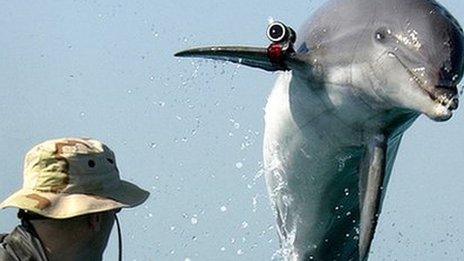Dogs of war: How man's best friend joined him at the front
- Published
As centenary commemorations of the sacrifices of men and women in World War One get under way, efforts are also being made to mark the work of Britain's war dogs.
It was on the beaches of the Barry Buddon military training centre in Angus that Lt Col Edwin Hautenville Richardson first proved that man's best friend could follow him to the front lines.
Richardson was living in Carnoustie in the run-up to World War One when he demonstrated how dogs - in particular Airedale Terriers - could be trained to carry out a range of military tasks, from carrying messages to locating injured men.
Other countries, including France and Germany, were already using dogs in a variety of roles, but it was Richardson's work in Scotland that convinced the British High Command that the animals had a role to play at the front.
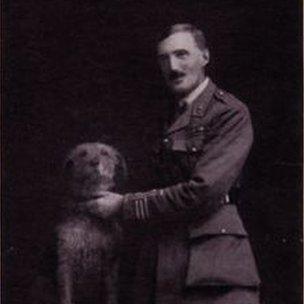
Richardson pictured with an Airedale in the 1920s
As early as 1895 Richardson noticed a German man buying a sheepdog from a shepherd, and learned that the German army was buying large quantities of British collies for military service.
After marrying fellow dog lover Blanche Bannon, the couple bought land for farming on the east coast of Scotland, where they pursued their mutual interest in canine training.
Officers at the nearby Barry Buddon army camp took an interest in their work, and let Richardson bring his dogs in to experiment during the training of soldiers as war clouds gathered over Europe.
Richardson - and Blanche - were eventually asked to set up the British War Dogs training school at Shoeburyness, Essex, where they trained hundreds of hounds for service in both world wars.
Wendy Turner, secretary of the Airedale Terrier Club of Scotland, can see why Richardson considered the determined terriers to have the right character for military service.
'No stopping them'
"At first he specialised in collies and terriers, but then in the Airedale he found what he considered to be the ideal dog," she said.
"They're very determined. They're very single-minded and there's no stopping them.
"Richardson was obviously an experienced trainer - they're notoriously difficult to train, you have to start from a young age.
"He used Barry Buddon for helping examine the dogs for them, it was done unofficially for the officers here, before he would take them down south and show them the finished product."

Airedale Terriers were taught to use gas masks as part of their military service
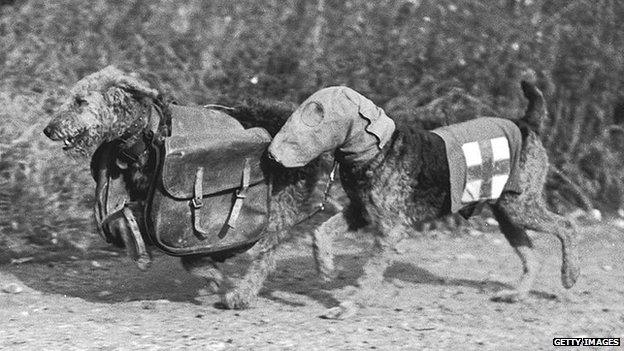
The dogs were also trained to carry first aid and supplies for soldiers at the front
Once their usefulness became clear, the animals were widely used by the Red Cross on the battlefield, as well as carrying messages for the military and acting as guard dogs.
"The Red Cross used them as first aid carriers, they had a little package on their neck with medication in it and everything, and they were used for going out and finding wounded soldiers on the battlefield," said Mrs Turner.
"Edwin Richardson would actually pay unemployed locals to come and be the injured and dead people lying about the dunes so the dogs could find them."
Recruits for Richardson's Shoeburyness school were recruited from Battersea Dogs Home, and strays were sent in from police stations around the country.

The dedicated dogs were also widely used in World War Two
After an appeal was put out for volunteers, one woman wrote in saying "I've given my husband and my sons, and now that he too is required, I give my dog."
The dogs were trained to wear gas masks and navigate the treacherous and often terrifying conditions of the front lines.
'One chance'
There are countless tales of heroic service on the part of war dogs; one Airedale, named Jack, came to the rescue of his battalion when they found themselves totally cut off, surrounded by shell-holes and barbed wire - and needed to summon reinforcements.
"No man could get through the environment, and their one chance was Jack," said Alastair Petrie, a former Lieutenant Colonel in the Territorial Army who has owned a number of Airedales.
"A piece of shrapnel smashed his jaw, but he carried on, and another shell tore open his coat right down his back, and he kept on going.

Richardson, pictured here in 1940, kept training Airedales at his dog school right into World War Two
"Finally his forepaw was shattered, but he dragged his body for the last three kilometres.
"There was the glaze of death in his eyes when he reached headquarters, but he'd done his work - he'd saved his battalion."
Richardson's work continued right into World War Two, although the school was moved to Bulford, in Wiltshire, and he even penned a book about British war dogs and their training.
The Airedale Terrier Club of Scotland is now planning a celebration of the work of Richardson and the sacrifices made by all dogs during the war.
They have created special hand-made bandanas bearing the slogan "we also served" and are urging club members and other dog owners to bring their pets to remembrance services.
"It's wonderful, when you read about them - although obviously I am biased towards Airedales," Mrs Turner said.
"They really were magnificent."
- Published4 August 2014
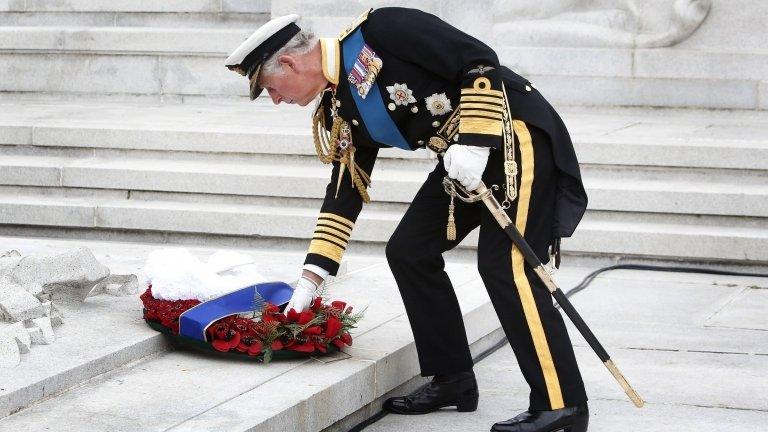
- Published5 August 2014
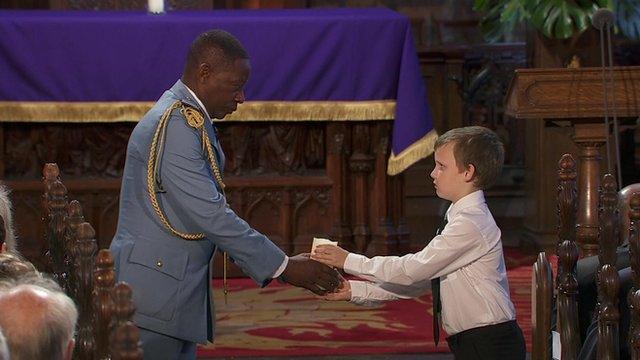
- Published19 July 2014
